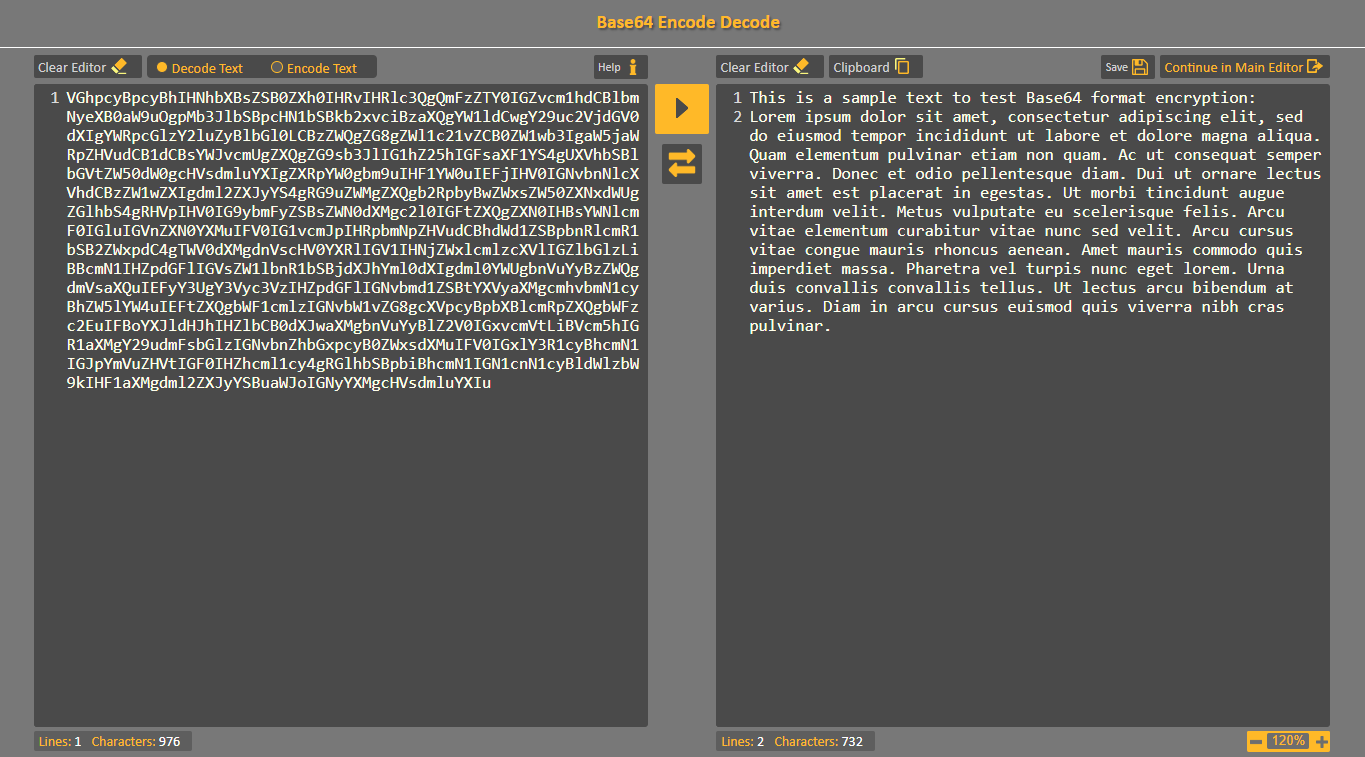

- CONVERT ENCODED TEXT TO PLAIN TEXT CODE
- CONVERT ENCODED TEXT TO PLAIN TEXT PASSWORD
- CONVERT ENCODED TEXT TO PLAIN TEXT SERIES
To obtain a token, the client ID and client secret of the destination service are sent to the platform UAA basic authentication is also used here. In order to be able to execute this request successfully, an access token must first be requested via the platform UAA, and this token must then be sent to the destination service in the request. A destination to the server is stored in the destination service, the client application reads the detailed information about this destination via HTTP request to the destination service. Two SAP CAP applications, client and server, are deployed in the same Cloud Foundry space. The underlying architecture of the Basic Authentication Destinations example is almost identical to the architecture of the No Authentication example. We will look at this in detail in later parts of this series. In this case, a token-based protocol such as OAuth2 should be used.

CONVERT ENCODED TEXT TO PLAIN TEXT PASSWORD
If a generic technical user is not sufficient for authentication, but a real personal user is required, Basic Authentication is also not the means of choice, because then the disadvantage is that the server side receives not only the username but also the password in plain text and the user has no control over how this sensitive information is further processed. Since credentials are transmitted unencrypted using this method, it should be ensured in any case that communication takes place encrypted via HTTPS to prevent data loss through man-in-the-middle attacks. Since this requires the unencrypted password, there is a high risk that attackers will succeed in stealing the data and thus gaining unauthorized access to the service. Basic authentication via an application that runs on the client side, e.g., in the web browser, should be avoided. Important: even if the cryptic appearance may suggest it, Base64 is only suitable for encoding, not for encryption! 😉īasic Authentication is particularly suitable for server-side authentication for a service using a technical user. Example:Īuthorization: Basic dXNlcm5hbWU6cGFzc3dvcmQ The value here is a Base64 encoded string with the format username:password, together with the prefix Basic. The user data is sent as an HTTP request header with the Authorization header key. the Basic Authentication header needs to be send again with every request. The server uses this information to verify whether or not the client is authorized to make this request based on correctly supplied authentication information.

Basic Authentication is a method by which a client sends username and password to a server with an HTTP request for authentication purposes.
CONVERT ENCODED TEXT TO PLAIN TEXT CODE
Basic Authenticationīefore we look into the actual code example, let’s briefly review the theory behind Basic Authentication. We will therefore take the first step in this direction in the second part of this series, which deals with destinations for what is probably the simplest type of authentication: System A (client) communicates with System B (server) via the Internet / HTTP and sends an Basic Authentication header with each request, since the server would otherwise reject the request in a friendly but firm manner. Sensitive and confidential data is almost always involved, and then it must be ensured that only trusted parties can access corresponding interfaces. Such scenarios are of course very pleasant and thankful from a developer’s point of view, however, they are only practical in the rarest of cases. In the first part, we addressed the underlying motivation and started with the easiest scenario for an easy-to-digest introduction: two SAP CAP applications deployed in the Cloud Foundry environment in the same space communicate with each other via Internet / HTTP without requiring authentication in any way.
CONVERT ENCODED TEXT TO PLAIN TEXT SERIES
This series is about taking a closer look at the different destination types of the SAP BTP Cloud Foundry environment and making them more tangible with executable code examples.


 0 kommentar(er)
0 kommentar(er)
